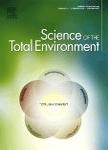版权所有:内蒙古大学图书馆 技术提供:维普资讯• 智图
内蒙古自治区呼和浩特市赛罕区大学西街235号 邮编: 010021

作者机构:Chinese Acad Sci Inst Appl Ecol Key Lab Forest Ecol & Management Erguna Forest Steppe Ecotone Res Stn Shenyang 110016 Liaoning Peoples R China Northeast Normal Univ Key Lab Vegetat Ecol Changchun Jilin Peoples R China Chinese Acad Sci Inst Bot Beijing 100093 Peoples R China Dalian Minzu Univ Coll Environm & Resources Dalian 116600 Peoples R China Chinese Acad Sci Xinjiang Inst Ecol & Geog Key Lab Biogeog & Bioresource Arid Land Urumqi 830011 Peoples R China Univ Oklahoma Inst Environm Genom Dept Microbiol & Plant Biol Norman OK 73019 USA
出 版 物:《SCIENCE OF THE TOTAL ENVIRONMENT》 (整体环境科学)
年 卷 期:2019年第654卷
页 面:960-968页
核心收录:
学科分类:0830[工学-环境科学与工程(可授工学、理学、农学学位)] 08[工学]
基 金:General Program of the National Natural Science Foundation of China Strategic Priority Research Program of the Chinese Academy of Sciences [XDB15010401] Office of the Vice President for Research at the University of Oklahoma Collaborative Innovation Center for Regional Environmental Quality, United States
主 题:Spatial distribution Soil microorganisms Microbial diversity Functional genes Structure-function relationships Drylands
摘 要:There is considerable debate regarding how the taxonomic diversity of microbial communities relates to the functional diversity across space while similar questions have been explored in macro-organism communities. Here, we investigated the taxonomic and functional diversity patterns of soil microbial communities by coupling the data obtained from marker genes sequencing and functional gene surveys. Meanwhile, we evaluated the relative effects of environment and geographic distance on shaping these patterns in alpine grasslands of northern China. Although the taxonomic diversity and composition of microbial communities varied across sites, we found no consistent changes in the functional structure. Both the environmental factors and geographic distance concurrently affected the taxonomic diversity patterns but they had no effects on the spatial variations in functional genes. The functional alpha diversity was weakly correlated to the taxonomic alpha diversity across sites. Moreover, we found no significant relationship between the taxonomic and functional composition similarity among microbial communities. Together, our results provide evidence that spatial variation in microbial functions could be independent of their variations in taxonomic diversity. Even the drivers of spatial variations in the functional structure could be totally different from those of taxonomic variations such as environmental differences and dispersal limitation. Our findings suggest that spatial variations of microbial function structure within a community would not follow the variations of taxonomic structures due to different drivers between both of them over space. (C) 2018 Elsevier B.V. All rights reserved.